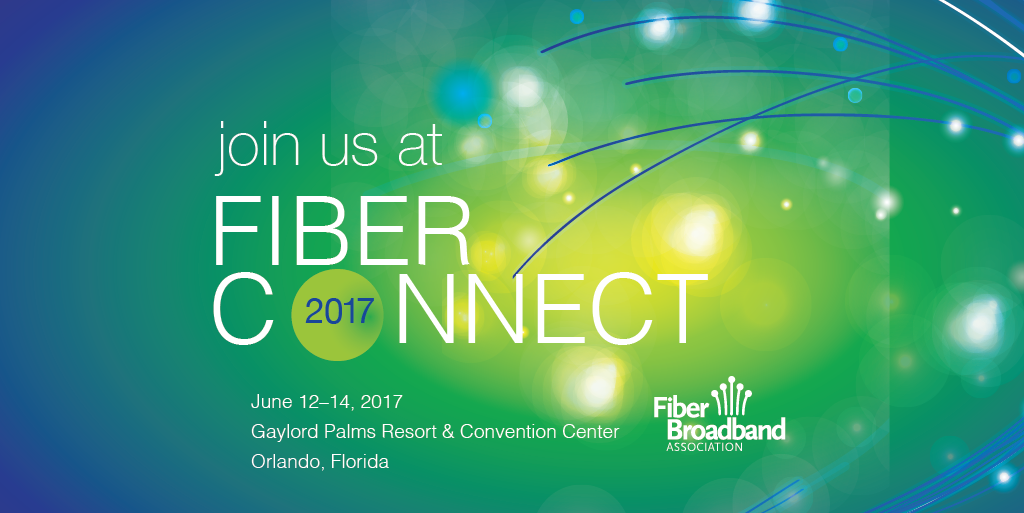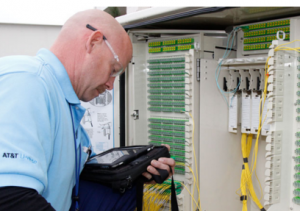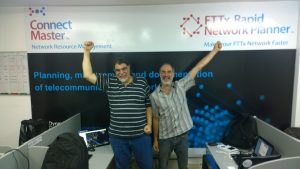
18 Feb Fiber Connect 2017: The Take Home Message For The World
Fiber Connect 2017 came to an end in June 2017. There are several things that can make one proud.
Whether you are an engineer, consultant, network owner or manufacturer, everyone is about to experience a fiber wave across the world.
There were several announcements about the fiber market from municipalities to Tier 1.

An AT&T fiber technician installing office connection.
AT&T went on with their plan to roll out FTTH, and the main aim was to maintain a firm grip at the market share. Verizon showed their commitment to the wireless market and FTTH when they agreed to a fiber deal with Corning at a price of $1bn. Google tested the market with announcements that went from San Antonio to Louisville.
Altice departed from HFC/DOCSIS 3.1 and indicated their seriousness in FTTH.
The majority of public private partnerships started various stages of operations and deployments, and the main focus was the Huntsville Open Access Model.
There are new innovative ways that are helping to leverage all internet data, hence assisting in network operation and network strategy.
Most of the keynote speakers reaffirmed their commitment to Wireless and fiber to the home.
Greg McCray was categorical that he wanted point-to-point wireless purchase.
Greg, Google Fiber’s CEO, indicated that the company had not left the market in spite of falling short of the FTTH targets the previous year. Greg said that Google Fiber was involved in the innovation of permits, construction, and design approaches that would help many clients.
After the $1 billion deal with Corning, Verizon indicated that they were firmly in the market.
Verizon’s CEO, Malady Kyle, said that the world would experience an increased push of NG-PON2 (Next-Generation Passive Optical Network) by 2018.

A photo during Fiber Connect 2017
Many keynote speakers during the Fiber Connect 2017 indicated that there was a need to change the way service providers deploy fiber networks. Customers are demanding for fiber networks, both backhaul, and FTTH, which will, in turn, change the market trends of web technologies. The demand will introduce increased complexity on the value chain from operations, construction, and network planning. Data models, work models, systems, and new partnerships are the primary drivers of the multi-party environment.
The new approaches will contribute to the delivery of the correct service to clients at the right time, and for an optimal cost.
No one is late in innovating in his/her fiber deployment.



No Comments